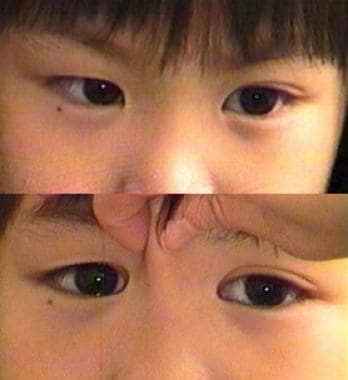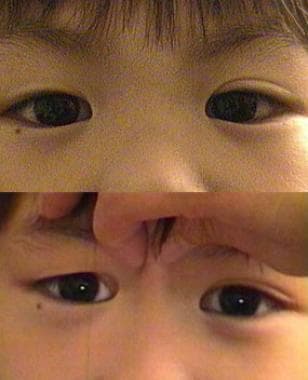Author
Kalpana K Jatla, MD Private Practice, Clarity Eye Center
Kalpana K Jatla, MD is a member of the following medical societies: American Academy of Ophthalmology
Disclosure: Nothing to disclose.
Coauthor(s)
S Anna Kao, MD Comprehensive Ophthalmologist, Emory at Lagrange; Staff Physician, Department of Ophthalmology, West Georgia Medical Center
S Anna Kao, MD is a member of the following medical societies: Georgia Society of Ophthalmology, Medical Association of Georgia
Disclosure: Nothing to disclose.
Kenneth T Horlander, MD, FCCP Director, Pulmonary Rehabilitation Program, Emory Clark-Holder Clinic; Physician in Pulmonary Medicine and Critical Care Medicine, Emory Clark-Holder Clinic and West Georgia Health Systems; Director, Medical and Surgical Intensive Care Unit, West Georgia Health System
Kenneth T Horlander, MD, FCCP is a member of the following medical societies: American College of Chest Physicians, American College of Physicians, American Diabetes Association, American Medical Association, American Thoracic Society, Society of Critical Care Medicine
Disclosure: Nothing to disclose.
Robert William Enzenauer, MD, MPH, MBA, MSS Professor of Ophthalmology and Pediatrics, University of Colorado School of Medicine; Chief of Ophthalmology, Children's Hospital of Colorado
Robert William Enzenauer, MD, MPH, MBA, MSS is a member of the following medical societies: American Academy of Ophthalmology, American Academy of Pediatrics, American Association for Pediatric Ophthalmology and Strabismus, American Association for Physician Leadership
Disclosure: CLEAR DONOR: Received consulting fee from Clear Donor for consulting; Partner received salary from Clear Donor for employment.
Specialty Editor Board
Simon K Law, MD, PharmD Clinical Professor of Health Sciences, Department of Ophthalmology, Jules Stein Eye Institute, University of California, Los Angeles, David Geffen School of Medicine
Simon K Law, MD, PharmD is a member of the following medical societies: American Academy of Ophthalmology, Association for Research in Vision and Ophthalmology, American Glaucoma Society
Disclosure: Nothing to disclose.
J James Rowsey, MD Former Director of Corneal Services, St Luke's Cataract and Laser Institute
J James Rowsey, MD is a member of the following medical societies: American Academy of Ophthalmology, American Association for the Advancement of Science, American Medical Association, Association for Research in Vision and Ophthalmology, Florida Medical Association, Sigma Xi, The Scientific Research Honor Society, Southern Medical Association, Pan-American Association of Ophthalmology
Disclosure: Nothing to disclose.
Chief Editor
Donny W Suh, MD, MBA, FAAP, FACS Professor, Department of Ophthalmology, Chief of Pediatric Ophthalmology and Adult Strabismus, Medical Director of Eye-Mobile, Gavin Herbert Eye Institute, UC Irvine Health, University of California, Irvine, School of Medicine; Associate Clinical Professor, Department of Pediatrics, Creighton University School of Medicine; Chief Medical Officer, Suh Precision Syringe, LLC; Medical Staff, Children’s Hospital of Orange County
Donny W Suh, MD, MBA, FAAP, FACS is a member of the following medical societies: American Academy of Ophthalmology, American Academy of Pediatrics, American Association for Pediatric Ophthalmology and Strabismus, American College of Healthcare Executives, American College of Surgeons, American Medical Association, Section on Ophthalmology, American Ophthalmological Society, International Strabismological Association, Iowa Medical Society, Metro Omaha Medical Society, National Eye Care Project, Nebraska Chapter of American Academy of Pediatrics, ORBIS, Surgical Eye Expeditions (SEE) International
Disclosure: Nothing to disclose.
Additional Contributors
Michael J Bartiss, OD, MD Medical Director, Ophthalmology, Family Eye Care of the Carolinas and Surgery Center of Pinehurst
Michael J Bartiss, OD, MD is a member of the following medical societies: American Academy of Ophthalmology, North Carolina Medical Society, American Academy of Pediatrics, American Association for Pediatric Ophthalmology and Strabismus
Disclosure: Nothing to disclose.
 Note the cross-eyed appearance of the right eye in the top image that corrects with elimination of the prominent epicanthal fold.
Note the cross-eyed appearance of the right eye in the top image that corrects with elimination of the prominent epicanthal fold.



